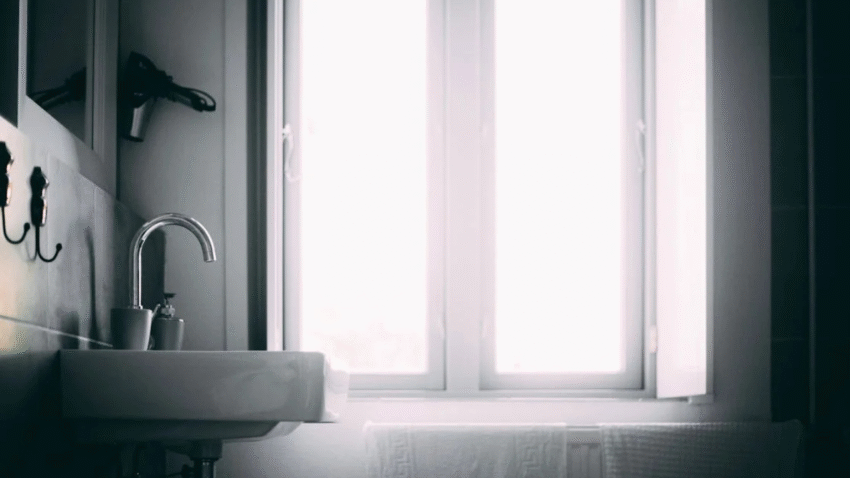Introduction
Think your bathroom sink is clean just because it looks shiny? Think again. This step-by-step guide on how to disinfect a bathroom sink will help you go beyond surface-level cleaning to kill germs, bacteria, and viruses that thrive in moist bathroom environments. From faucet handles to the drain, we’ll cover everything you need to sanitize your sink properly and keep it fresh, hygienic, and safe.
Why Disinfecting a Bathroom Sink Matters
The bathroom sink is a hotspot for germs. Every day, it catches toothpaste, saliva, soap residue, hair, and even traces of fecal matter from handwashing. Add constant moisture and warm air, and you’ve got the perfect breeding ground for bacteria, mold, and viruses.
Disinfecting your sink regularly helps reduce illness-causing microbes, eliminate bad odors, and prevent grime buildup. It’s especially important if you share your bathroom with others or if someone in your home is sick. A clean and disinfected sink contributes to a healthier household — and a more pleasant space to begin and end your day.
Step-by-Step Guide to Disinfecting a Bathroom Sink
1. Gather Your Supplies
Here’s what you’ll need to disinfect your sink effectively:
- Mild bathroom cleaner or dish soap
- Disinfectant spray or solution (bleach, hydrogen peroxide, or EPA-approved cleaner)
- Baking soda (optional for deeper cleaning)
- White vinegar (optional for limescale)
- Microfiber cloths or disposable paper towels
- Old toothbrush or small scrub brush
- Rubber gloves (recommended)
- A sponge or non-abrasive scrub pad
Note: Always read product labels to ensure proper usage and safety, especially when using bleach or chemical disinfectants.
2. Clear and Rinse the Sink
Remove any items from around or inside the sink, such as soap dishes, razors, toothbrushes, or cups. Rinse the basin and faucet with warm water to remove loose debris like toothpaste, hair, or makeup.
Bathroom Tip: Cleaning before disinfecting ensures that the disinfectant works more effectively. Dirt and grime can block disinfectants from reaching surfaces properly.
3. Clean With Soap or All-Purpose Cleaner
Apply a few drops of dish soap or bathroom cleaner to a sponge and scrub the sink basin, faucet, drain area, and handles. Make sure to get around the edges of the drain and behind the faucet base — places that are often missed.
For stubborn grime or discoloration, sprinkle a little baking soda directly into the sink and scrub it into the surface with your sponge. Rinse thoroughly with warm water.
Bonus Tip: Use an old toothbrush to clean around tight edges, faucet bases, and overflow holes.
4. Apply Your Disinfectant
Now that the sink is clean, it’s time to disinfect. Spray a disinfectant product onto the following areas:
- Sink basin and inner walls
- Faucet handles and spout
- Sink edges and countertop overlap
- Drain area and overflow hole
- Cabinet handles near the sink (optional)
Let the disinfectant sit for the time recommended on the product label — typically anywhere from 1 to 10 minutes. This dwell time is crucial for killing germs effectively.
Homemade Disinfectant Options:
- Hydrogen Peroxide (3%) – Spray directly and leave for 5–10 minutes before wiping
- Bleach Solution – Mix 4 teaspoons of bleach with 1 quart of water. Apply carefully and let sit 5–10 minutes before rinsing
Caution: Never mix bleach and vinegar or ammonia — the fumes can be toxic.
5. Wipe and Rinse
Once the disinfectant has had time to sit, wipe the sink down with a clean microfiber cloth or disposable paper towel. Rinse with warm water to remove any chemical residue. Dry the sink and surrounding areas with a dry cloth to prevent water spots and slow bacterial regrowth.
6. Disinfect the Accessories
Don’t forget to clean and disinfect items that sit near or on the sink, like:
- Soap dispensers
- Toothbrush holders
- Cups or trays
- Sink stoppers or drain covers
Wash them with soap and water, then spray with disinfectant and let them air-dry completely before placing them back.
Common Mistakes to Avoid
Here are some common errors that can undermine your sink disinfecting routine:
- Mistake: Skipping the cleaning step
Solution: Always clean before disinfecting. Disinfectants don’t work well on dirty surfaces. - Mistake: Not letting disinfectant sit long enough
Solution: Follow the product’s recommended contact time to ensure germs are fully killed. - Mistake: Reusing dirty cloths or sponges
Solution: Use clean, disinfected cloths or disposable towels to avoid spreading bacteria. - Mistake: Forgetting the faucet handles
Solution: Faucet handles are high-touch zones — always disinfect them thoroughly. - Mistake: Using the wrong disinfectant
Solution: Choose a disinfectant labeled as effective against viruses and bacteria, preferably one approved by health authorities (like EPA-listed products in the U.S.).
Extra Tips & Bathroom Hacks
- Clean your sink daily, disinfect weekly: A quick daily clean keeps buildup under control. Disinfecting once a week is enough for most households.
- Use a separate sponge just for the bathroom: Avoid cross-contamination from kitchen or multipurpose sponges.
- Add a few drops of essential oil: After disinfecting, a few drops of lavender or tea tree oil around the drain can leave your sink smelling fresh and naturally resist bacteria.
👉 Want to take it further? Read our guide on how to clean a bathroom mirror without streaks to complete your bathroom cleaning session!
Conclusion
Disinfecting your bathroom sink doesn’t have to be time-consuming or complicated — but it does need to be done right. By starting with a thorough clean, applying the right disinfectant, and giving it time to work, you’ll eliminate harmful bacteria and maintain a healthier, fresher bathroom. Make it part of your weekly routine and enjoy the confidence of a truly clean space.
Bookmark this guide so you always know how to keep your sink sanitary, sparkling, and germ-free.
